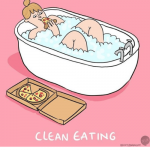It is that time of the year again when we are all wondering when and how to jump start our annual weight loss goals. While its undoubtedly easy to set a weight loss goal at the start of each year, sticking to it and seeing it through is another whole story. It is no wonder that the World Health Organization has cited that physical inactivity is now identified as the fourth leading risk factor for global mortality!
While there are enough weight loss plans in our market today, there is not one formula that fits all. Rather, it is crucial to ensure that you dedicate your time to a plan that is affordable and sustainable in the long haul, and not just a “feel good” fad!
It is important to note that there are some clinical guidelines that have been tested and scientifically documented as appertains to how much exercise each person should have depending on your age. Proper diet will always contribute to 80% weight loss, while exercise takes up 20%.
According to health guidelines released under the World Health Organization (WHO) umbrella, there are different exercise regimens for groups of people between the age of 5-17 year olds; 18-64-year olds; and 65 and above year olds.
5 to 17 year old Age Group
Children and young people aged 5–17 years old should accumulate at least 60 minutes of moderate to vigorous-intensity physical activity daily. Physical activity of amounts greater than 60 minutes daily will provide additional health benefits. Most of daily physical activity should be aerobic. Vigorous-intensity activities should be incorporated, including those that strengthen muscle and bone, at least 3 times per week.
18 to 64 year Old Age Group
For adults between the age of 18-64 years, physical activity should include recreational or leisure-time physical activity, transportation (e.g walking or cycling), occupational (i.e. work), household chores, play, games, sports or planned exercise, in the context of daily, family, and community activities. This is inorder to improve cardiorespiratory and muscular fitness, bone health and reduce the risk of non communicable diseases and depression the following are recommended: WHO recommends that such adults aged 18–64 years should do at least 150 minutes of moderate-intensity aerobic physical activity throughout the week, or do at least 75 minutes of vigorous-intensity aerobic physical activity throughout the week, or an equivalent combination of moderate- and vigorous-intensity activity.
The aerobic activity should be performed in bouts of at least 10 minutes duration. For any other additional health benefits, adults should increase their moderate-intensity aerobic physical activity to 300 minutes per week, or engage in 150 minutes of vigorous-intensity aerobic physical activity per week, or an equivalent combination of moderate- and vigorous-intensity activity.Muscle-strengthening activities should be done involving major muscle groups on 2 or more days a week.
Over 65 years old Age Group
Moreover, for adults who are 65 years old and above, physical activity should include recreational or leisure-time physical activity, transportation (e.g walking or cycling), occupational (if the person is still engaged in work), household chores, play, games, sports or planned exercise, in the context of daily, family, and community activities. These exercises should be inorder to improve cardiorespiratory and muscular fitness, bone and functional health, and reduce the risk of non communicable diseases, depression and cognitive decline. Essentially, such adults should do at least 150 minutes of moderate-intensity aerobic physical activity throughout the week, or do at least 75 minutes of vigorous-intensity aerobic physical activity throughout the week, or an equivalent combination of moderate- and vigorous-intensity activity.
Again, the aerobic activity should be performed in bouts of at least 10 minutes duration. To garner any other additional health benefits, such adults should increase their moderate intensity aerobic physical activity to 300 minutes per week, or engage in 150 minutes of vigorous intensity aerobic physical activity per week, or an equivalent combination of moderate- and vigorousintensity activity as well. However, adults within this age group with poor mobility should perform physical activity to enhance balance and prevent falls on 3 or more days per week.
Conclusively, it is crucial to ensure that you are not over-exercising and that you are choosing the correct regimen depending on your needs at any given time. Proper diet is still key to achieving the best weight loss results.
You can now buy a general weight loss meal plan from our store for only 10 dollars! Visit: https://www.ask-thenutritionist.com/store/custom-meal-plan/









